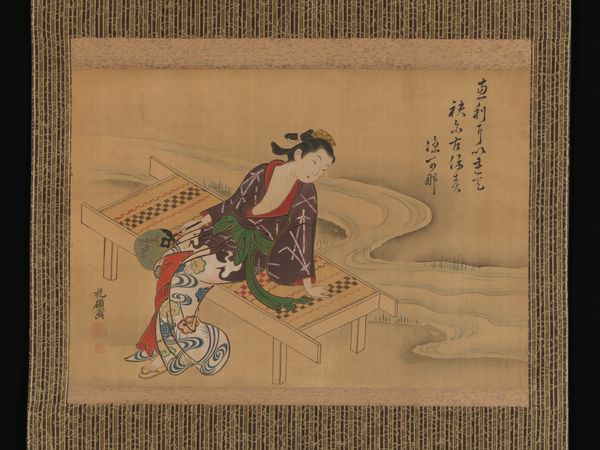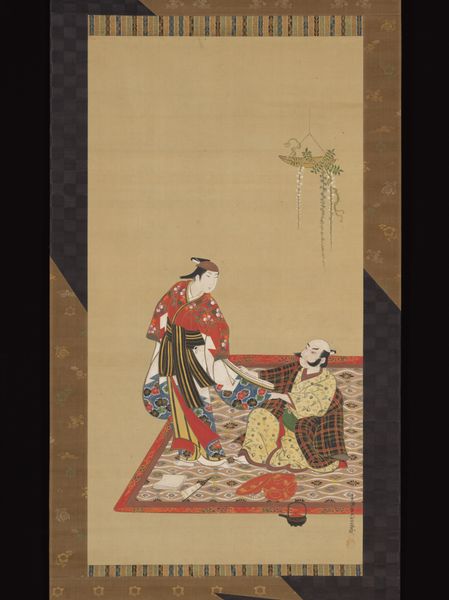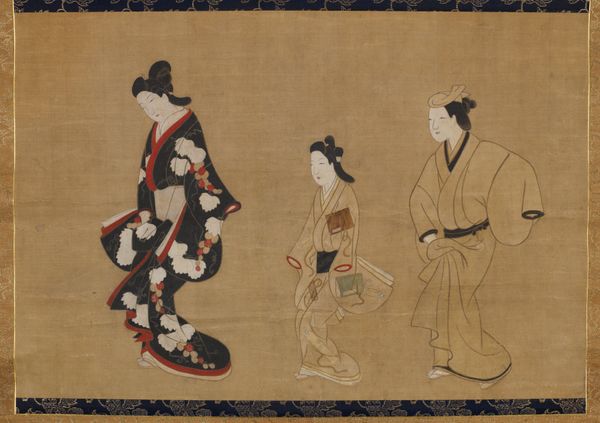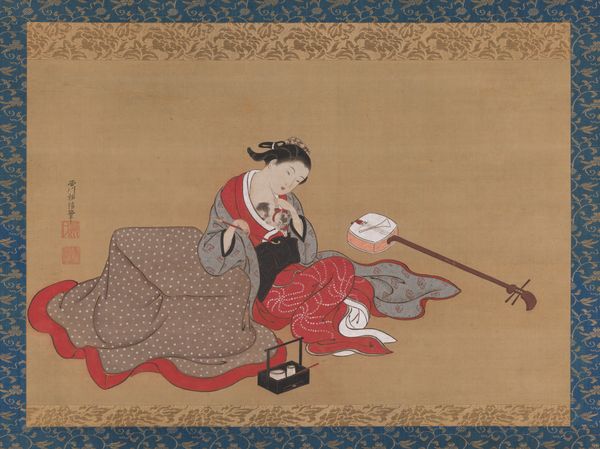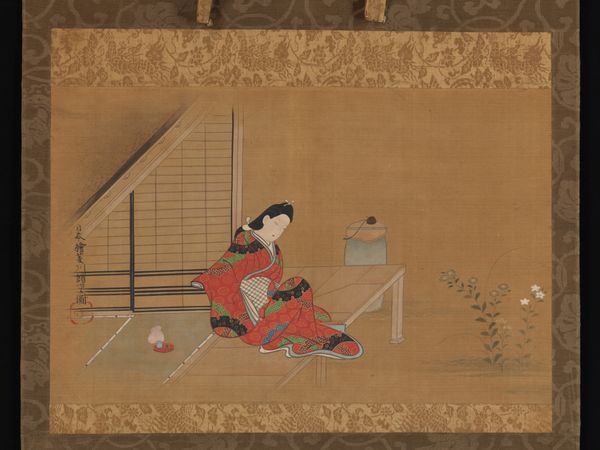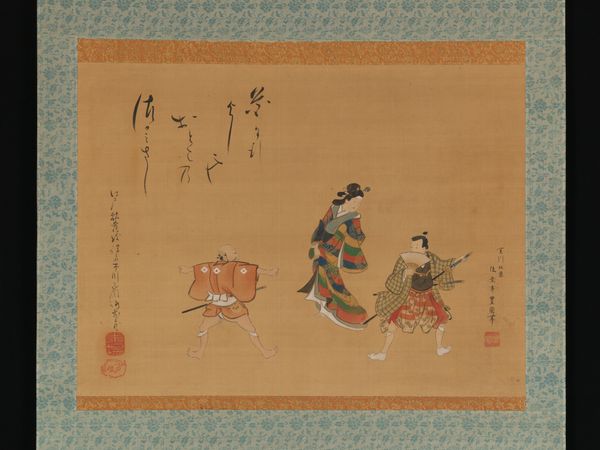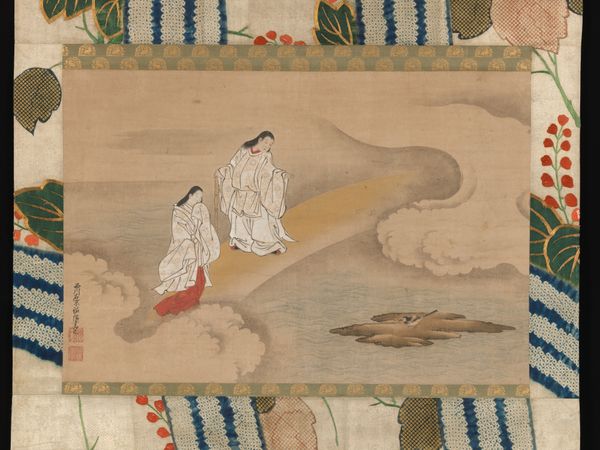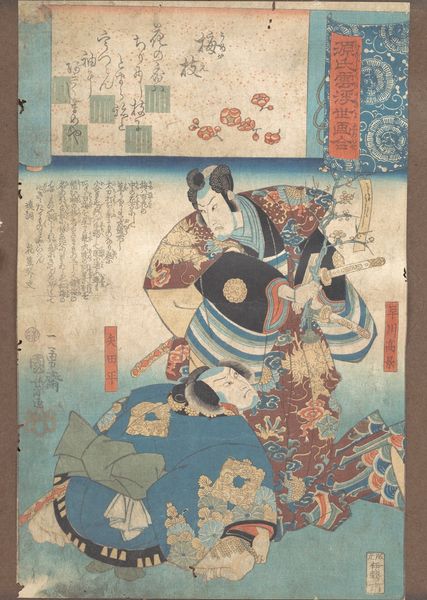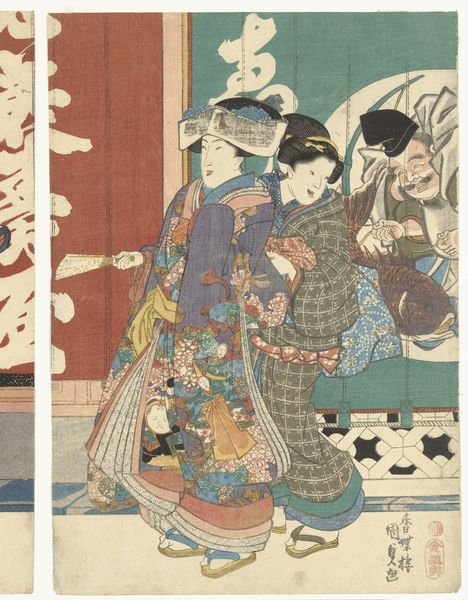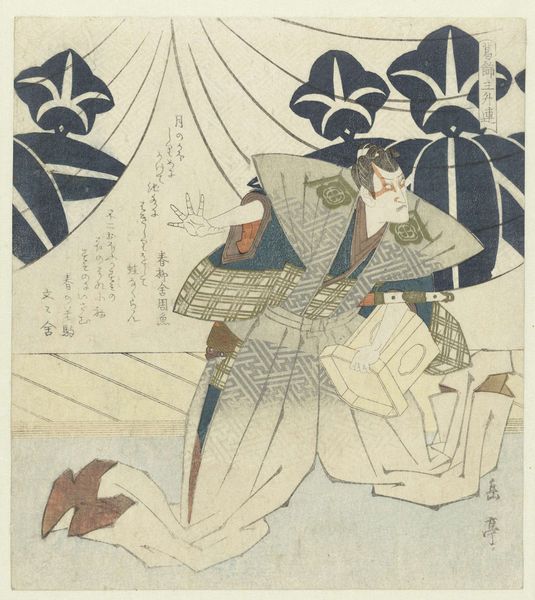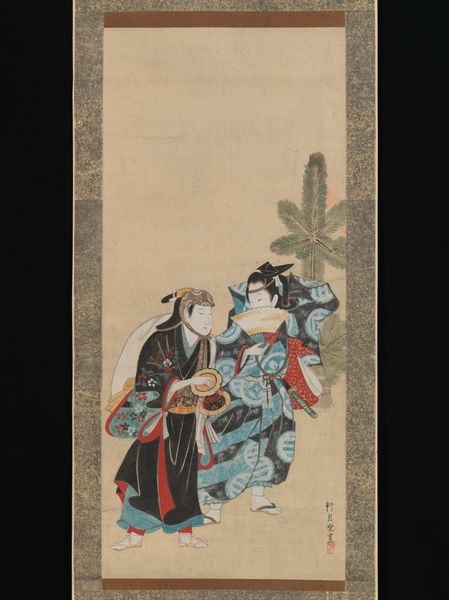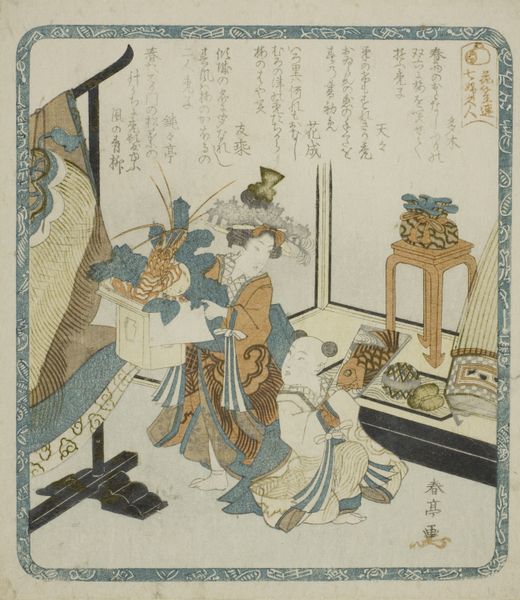
Kabuki Play Kusazuribiki from the Tales of Soga (Soga monogatari) 18th century
0:00
0:00
painting, watercolor
#
narrative-art
#
painting
#
asian-art
#
ukiyo-e
#
figuration
#
watercolor
#
watercolor
Dimensions: Image: 12 5/16 × 19 5/8 in. (31.3 × 49.9 cm) Overall with mounting: 49 1/8 × 25 1/8 in. (124.8 × 63.8 cm) Overall with knobs: 49 1/8 × 27 5/16 in. (124.8 × 69.3 cm)
Copyright: Public Domain
Editor: This is "Kabuki Play Kusazuribiki from the Tales of Soga", an 18th-century watercolor by Okumura Masanobu, currently at the Metropolitan Museum. The scene feels tense, with one figure kneeling before another who holds a sword. How do you interpret this work, especially considering its narrative context? Curator: This work offers us a fascinating lens through which to examine power dynamics and social expectations within the Kabuki tradition and 18th-century Japanese society. Think about the figure with the sword; how are we meant to perceive her agency? Is this a subversion or reinforcement of gender roles within the context of Kabuki, where male actors often play female roles? Editor: That's interesting. I hadn’t considered the performative aspect and its relation to gender. The kneeling figure seems submissive, yet the sword suggests a potential for resistance. Curator: Exactly. Consider also the “Tales of Soga,” the narrative source of this play, steeped in themes of revenge and loyalty. How might this context inform our understanding of the relationship between these figures? What societal norms are being upheld or challenged? Is it really about the individual or a performance? Editor: I see. So it’s not just about the immediate action, but also the cultural and historical weight of the story and its representation on stage. Curator: Precisely. Looking closely, you realize the print provides more than a glimpse into a specific play, it mirrors a meditation on identity, social structures, and narrative tradition within a specific time. Editor: Thanks for this deep dive; it highlights the need to consider artwork within multilayered cultural contexts. Curator: Absolutely. The beauty of art history lies in understanding how these contexts shape both the creation and the reception of an artwork.
Comments
No comments
Be the first to comment and join the conversation on the ultimate creative platform.
